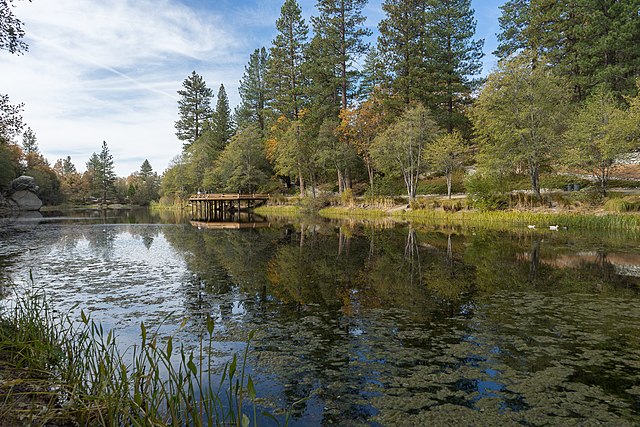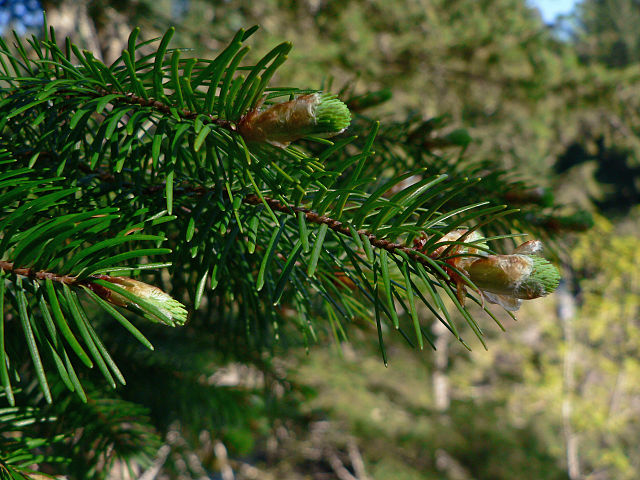Sequoiadendron giganteum, also known as the giant sequoia, giant redwood or Sierra redwood is a coniferous tree, classified in the family Cupressaceae in the subfamily Sequoioideae. Giant sequoia specimens are the most massive trees on Earth. They are native to the groves on the western slopes of the Sierra Nevada mountain range of California but are grown around the world.
Sequoiadendron giganteum
Mature cones and seed
The Generals Highway passes between giant sequoias in Sequoia National Park
Lake Fulmor, featuring a small grove of giant sequoia trees (top center)
Conifers are a group of cone-bearing seed plants, a subset of gymnosperms. Scientifically, they make up the division Pinophyta, also known as Coniferophyta or Coniferae. The division contains a single extant class, Pinopsida. All extant conifers are perennial woody plants with secondary growth. The great majority are trees, though a few are shrubs. Examples include cedars, Douglas-firs, cypresses, firs, junipers, kauri, larches, pines, hemlocks, redwoods, spruces, and yews. As of 2002, Pinophyta contained seven families, 60 to 65 genera, and more than 600 living species.
Conifer
The narrow conical shape of northern conifers, and their downward-drooping limbs, help them shed snow.
Tāne Mahuta, the biggest kauri (Agathis australis) tree alive, in the Waipoua Forest of the Northland Region of New Zealand.
Pinaceae: needle-like leaves and vegetative buds of Coast Douglas fir (Pseudotsuga menziesii var. menziesii)








